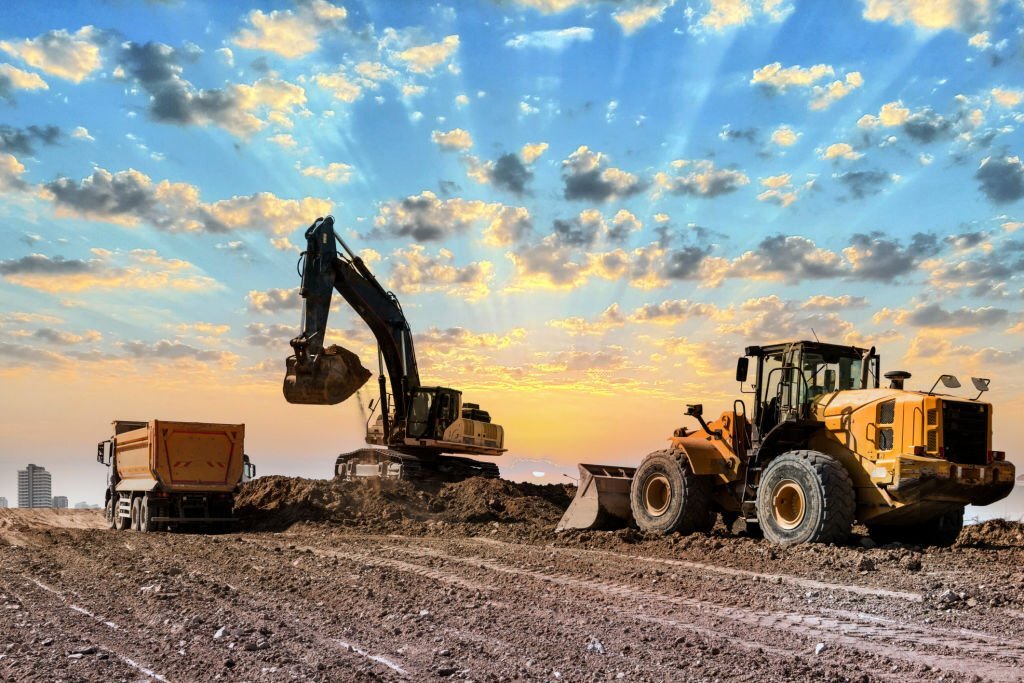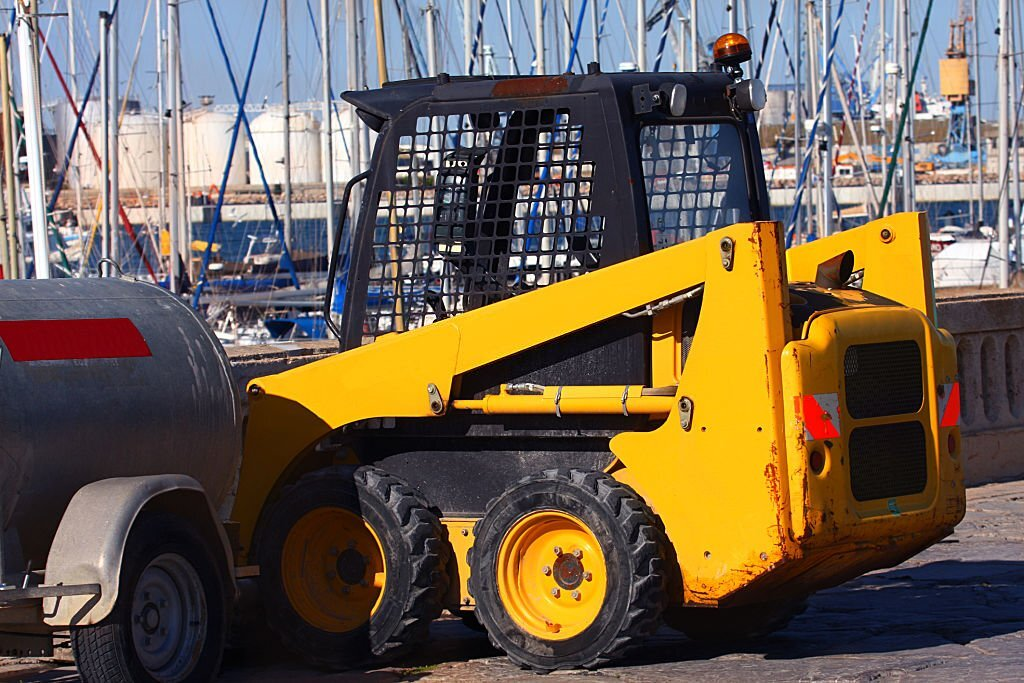
Top 5 Safety Features to Look for in Heavy Equipment
When it comes to heavy equipment, safety should always be a top priority. The inclusion of advanced safety features in construction and industrial machinery can significantly reduce the risk of accidents and injuries. In this article, we will discuss the top 5 safety features to look for when selecting heavy equipment, providing insights into how these features enhance workplace safety and protect operators.
Rollover Protection System (ROPS): A Rollover Protection System (ROPS) is a crucial safety feature that protects operators in the event of a machine rollover. ROPS consists of reinforced frames or structures designed to withstand the impact and prevent the operator compartment from collapsing. When selecting heavy equipment, ensure that it is equipped with a certified ROPS to minimize the risk of serious injuries or fatalities.
Operator Seat Belt: An operator seat belt is a simple yet critical safety feature that should be present in all heavy equipment. Seat belts keep operators securely positioned in their seats, reducing the risk of ejection or being thrown from the equipment during sudden stops, collisions, or rollovers. Insist on seat belt usage and check for functional seat belt restraints when purchasing heavy equipment.
Advanced Braking Systems: Modern heavy equipment often comes equipped with advanced braking systems to enhance safety. These systems may include features such as anti-lock braking systems (ABS) and automatic braking assistance. ABS prevents wheel lock-up during braking, improving control and stability, especially on slippery surfaces. Automatic braking assistance can help mitigate accidents by automatically applying brakes in emergency situations.
Operator Visibility Enhancements: Good visibility is essential for safe equipment operation. Look for heavy equipment models with visibility enhancements such as rearview cameras, proximity sensors, and blind-spot detection systems. These features improve the operator’s awareness of their surroundings, reducing the risk of collisions with workers or objects in the vicinity.
Operator Training and Safety Systems: In addition to physical safety features, consider heavy equipment models that offer operator training and safety systems. These systems may include onboard safety displays, warning lights or alarms for specific hazards, and equipment-specific training programs. Such features and training help operators understand and navigate potential risks, improving overall safety performance.
Heavy Equipment Safety: Protecting Lives and Construction Projects
Safety is paramount on construction sites, especially when it comes to operating heavy equipment. The robust nature of heavy equipment used in construction projects demands a deep commitment to safety, not only to protect lives but also to ensure the successful completion of projects. In this article, we’ll explore essential safety features and tips for operating heavy equipment responsibly.

Personal Protective Equipment (PPE):
Personal protective equipment is the first line of defense for equipment operators and construction workers. When operating heavy equipment, PPE such as hard hats, high-visibility vests, steel-toed boots, gloves, and hearing protection should be worn to mitigate the risks associated with construction sites. Ensuring that all personnel have the appropriate PPE is a fundamental safety measure.
Inspect Equipment Thoroughly:
Before operating any heavy equipment, operators should conduct thorough equipment inspections. This includes checking for mechanical issues, hydraulic leaks, worn-out components, and any signs of damage. Routine inspections help identify potential problems and prevent accidents due to equipment malfunctions.
Heavy Equipment Safety Features:
Modern heavy equipment is equipped with a range of safety features designed to protect operators and construction site workers. Some of these features include:
Rollover Protection Systems (ROPS): ROPS are structures designed to protect operators in the event of a rollover or tip-over.
Seat Belts: Operators should always wear seat belts when operating heavy equipment. In the event of an accident, seat belts prevent ejection from the equipment.
Backup Alarms: These audible alarms warn personnel on the construction site when the equipment is in reverse, reducing the risk of accidents.
Emergency Stops: Heavy equipment should be equipped with easily accessible emergency stop buttons that can quickly shut down the equipment in case of an emergency.
Set Physical and Emotional Limits:
Operating heavy equipment requires a high level of concentration and focus. Operators should be aware of their physical and emotional limits. Fatigue, stress, or emotional distractions can impair an operator’s judgment and reaction time, leading to accidents. Employers should encourage breaks and provide support to help operators manage stress and fatigue.
Maintain Three-Point Contact:
Entering or exiting heavy equipment poses a risk of slips, trips, and falls. Operators and workers should always maintain three-point contact when climbing onto or off equipment. This means having two hands and one foot, or two feet and one hand, in contact with the equipment at all times to ensure stability.
Heavy Equipment Safety Tips:
Here are some additional safety tips for operating heavy equipment on construction sites:
Always follow equipment operation manuals and safety guidelines provided by the manufacturer.
Communicate effectively with other workers on the construction site, especially when moving or operating heavy equipment.
Be cautious of blind spots, as heavy equipment may have limited visibility.
Keep equipment clean and free of debris that could interfere with its operation.
Never allow unauthorized personnel to operate heavy equipment.
Stay updated on safety training and certification requirements for heavy equipment operation.
In case of inclement weather, be especially vigilant as slippery conditions can impact the stability and control of heavy equipment.
Safety Tips for Heavy Equipment Operators: Ensuring Safe Equipment Operation
Heavy equipment operators are the backbone of the construction industry, responsible for handling powerful machinery and contributing to the successful completion of various projects. However, ensuring their safety and the safety of others on construction sites is of paramount importance. In this article, we will discuss essential safety tips for heavy equipment operators to promote safe equipment operation and reduce the risk of accidents.

Seat Belt Usage:
The importance of wearing a seat belt cannot be overstated. Seat belts are a primary safety measure to protect heavy equipment operators in the event of a sudden stop, collision, or equipment rollover. Always fasten your seat belt before operating any heavy machinery.
Avoid Power Lines:
Heavy equipment operators must be vigilant when working near power lines. Overhead power lines pose a significant electrical hazard. Always maintain a safe distance from power lines, and use extreme caution when operating equipment in their vicinity.
Be Aware of Blind Spots:
Heavy equipment, such as bulldozers and excavators, often have blind spots that limit visibility. Operators should be aware of these blind spots and use extra caution when maneuvering equipment. Check mirrors, use spotters when necessary, and communicate with ground personnel to avoid accidents.
Avoid Being Caught In Between Components:
Operators should be cautious when entering or exiting the cab or when performing maintenance tasks around heavy machinery. Beware of pinch points and moving components that could cause injury. Always follow proper procedures and use safety mechanisms provided by the equipment manufacturer.
Use Hand Signals and Communication:
Effective communication is essential on construction sites. Operators should be proficient in using hand signals or two-way radios to communicate with ground personnel and other equipment operators. Clear communication helps prevent accidents and coordinate tasks efficiently.
Adhere to Load Limits:
Exceeding load limits can lead to equipment failure, accidents, and injury. Operators should be knowledgeable about load capacities and adhere to load limits specified by the equipment manufacturer. Overloading equipment compromises stability and safety.
Three-Point Contact Rule:
When entering or exiting heavy equipment, operators should follow the three-point contact rule. This means using both hands and one foot or both feet and one hand to maintain contact with the equipment, ensuring stability and preventing falls.
Proper Use of Safety Glasses:
Safety glasses are essential personal protective equipment (PPE) for heavy equipment operators. They protect the eyes from dust, debris, and flying objects. Operators should wear safety glasses at all times while operating equipment.
Wear Personal Protective Equipment (PPE):
In addition to safety glasses, operators should wear other appropriate PPE, including hard hats, high-visibility vests, gloves, and steel-toed boots. PPE provides additional protection against various hazards on construction sites.
Familiarize Yourself with Equipment:
Before operating a specific piece of heavy machinery, operators should undergo comprehensive training and familiarize themselves with the equipment’s controls, features, and safety mechanisms. Knowing the equipment inside and out enhances safety and efficiency.
Effective Communication Signals: Ensuring Safe and Efficient Equipment Operation
Effective communication signals play a critical role on construction sites, where heavy equipment and machinery are in constant operation. Failure to communicate clearly and efficiently can lead to serious injuries, accidents, and even fatalities. In this article, we will emphasize the importance of effective communication signals to ensure safe and efficient equipment operation on construction sites.

Hand Signals for Clarity:
Hand signals are a fundamental means of communication between equipment operators, ground personnel, and spotters on construction sites. These signals convey critical information about equipment movement, load positioning, and potential hazards. Operators and ground personnel should be well-versed in standardized hand signals to prevent accidents and ensure smooth operations.
High-Visibility Vests for Identification:
High-visibility vests are a simple yet effective way to enhance visibility and safety on job sites. They help distinguish personnel roles and responsibilities, allowing operators to identify ground personnel and spotters easily. Ensuring that all workers wear high-visibility vests contributes to a safer work environment.
Safety Measures to Prevent Accidents:
Understanding the intended purpose of heavy equipment is crucial for safe operation. Operators should be well-trained and familiar with the operator manual for their assigned machines. This knowledge allows them to operate equipment efficiently and reduce the risk of accidents caused by equipment misuse.
Mind Gas Lines and Hydraulic Hoses:
Gas lines and hydraulic hoses are essential components of heavy equipment. Operators must be aware of their location and exercise caution to prevent accidental damage or leaks. A damaged gas line or hydraulic hose can result in serious injuries or even fires on the job site.
Administrative Controls:
Construction sites often implement administrative controls, such as establishing buffer zones and safe maneuvering areas, to prevent accidents. These controls help maintain a safe distance between equipment and workers, reducing the risk of collisions and injuries.
De-Energize Energy Sources:
Before performing maintenance or repairs, operators must de-energize energy sources to prevent unexpected start-ups. This safety measure ensures that equipment cannot be inadvertently activated, protecting maintenance personnel from harm.
Acquire Necessary Skills:
Safe operation of heavy equipment requires operators to possess the necessary skills and training. Operators should undergo comprehensive training programs to develop the skills and knowledge required for safe and efficient equipment operation.
Maintain Eye Contact:
Effective communication signals often involve maintaining eye contact between operators and ground personnel or spotters. This visual connection enhances understanding and coordination, especially in high-risk situations.
Mind the Swing Radius:
When operating equipment with rotating components, such as excavators or cranes, operators should be aware of the swing radius. The swing radius represents the area the equipment can reach during rotation. Workers should never enter this danger zone to prevent accidents.
Hearing Protection to Prevent Hearing Loss:
Construction sites can be noisy environments, and prolonged exposure to loud equipment can result in hearing loss. Wearing hearing protection, such as earplugs or earmuffs, is essential for safeguarding hearing health.
Conclusion:
When purchasing heavy equipment, prioritizing safety features is crucial for protecting operators and minimizing the risk of accidents. Look for equipment with ROPS, operator seat belts, advanced braking systems, visibility enhancements, and operator training and safety systems. These features contribute to a safer work environment, reduce the likelihood of injuries, and promote a culture of safety. By selecting heavy equipment with top-notch safety features, you invest in the well-being of your operators and enhance overall workplace safety.

